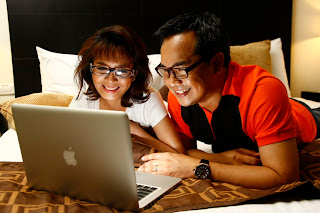While some (or most) photographers would prefer to lug their DSLR's around all the time, others would rather have a compact cam always tucked into their pockets for some quick snaps where ever they go. These days, technology has already caught up with the demands of photographers and have developed compact cams with full manual control features. But this comes with a price. For the budget conscious, they would rather buy compact-point-and-shoot-cams.
But this should not mean that you will put fun aside. Decent, budget friendly point-and-shoots can still yield good photos. You just need to familiarize yourself with the cam and apply the basic photography-principles.
For example.....slow shutter shooting. This technique can easily be achieved in your DSLR by putting your cam on Manual mode and by turning your shutter dial to a desired slow shutter speed.
It's a bit different on your point-and-shoot though.
There are two ways to do this:
One...if your P&S has an ISO setting adjustment, set it at the lowest ISO setting, and turn the flash off. With this setting, even if the cam is on P (program mode), it will still give you the slowest shutter speed within the limits and capacity of your P&S. My P&S yielded an F3.5 aperture and an average of 1sec or 1/4 sec shutter speed.
Another way is to set your cam on Night Shot mode. This setting automatically sets the camera at a slow shutter speed alowing low light to be captured.
With these settings, you can either steady your cam with a tripod or create motion blurs like I did here.
Always have fun and never let equipment limitations get in the way.
Hope this helps. Happy shooting!






































